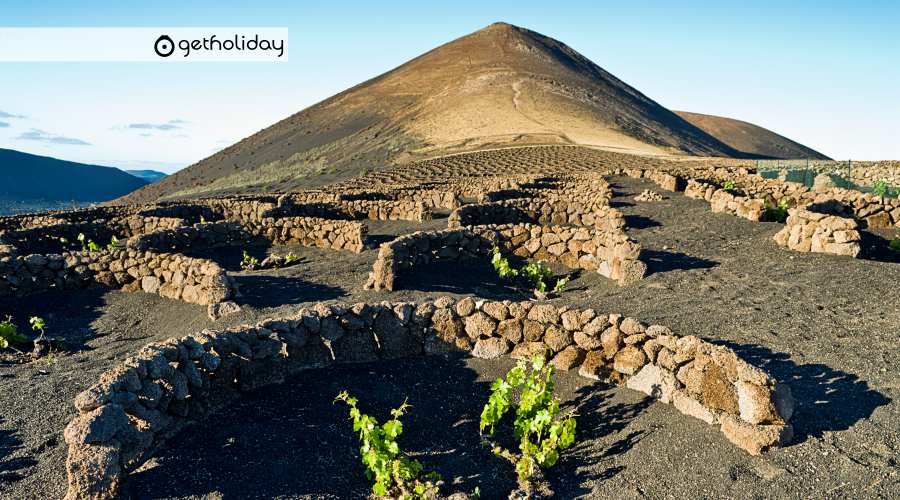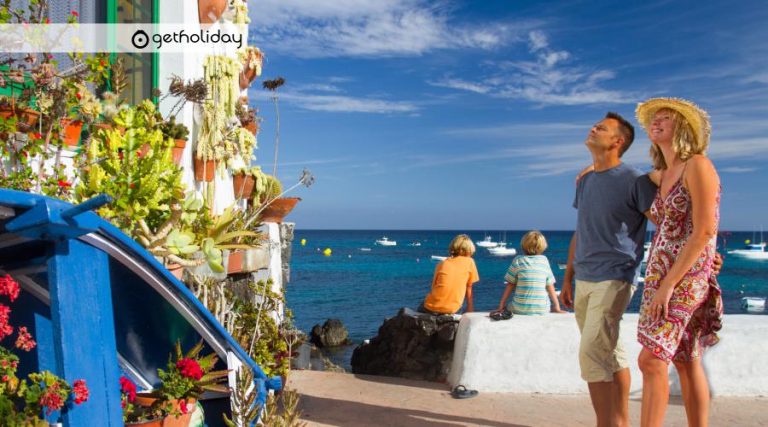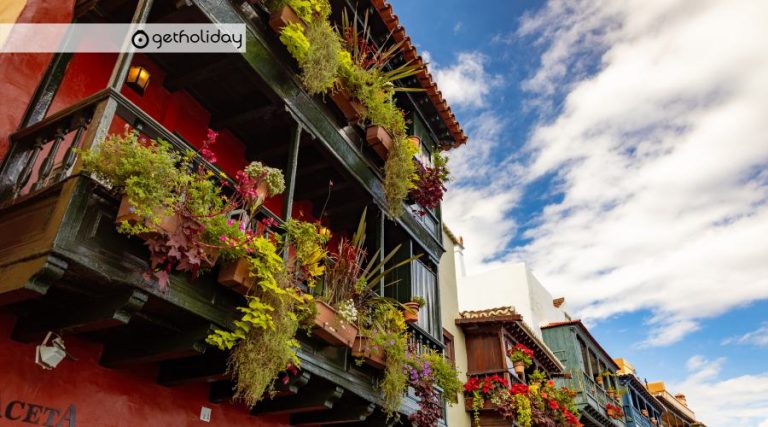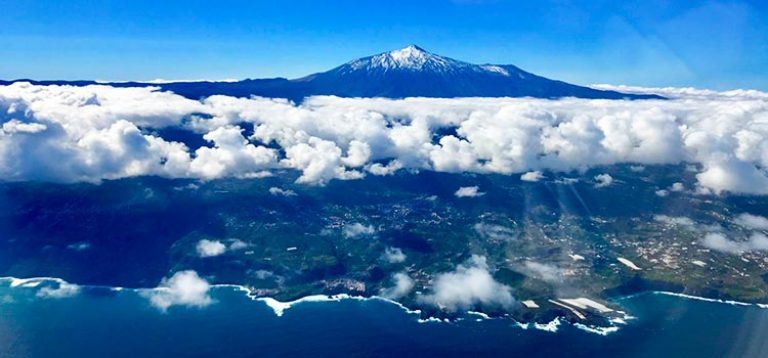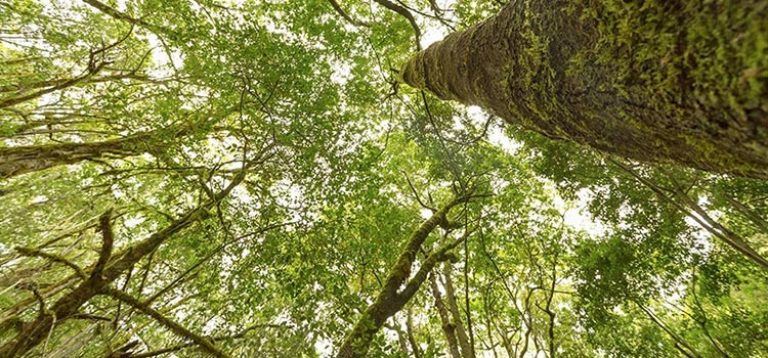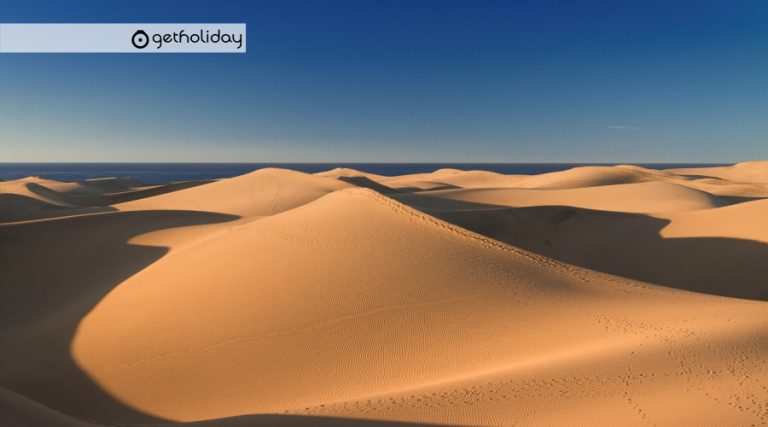Everything you need to know about Lanzarote
The island of Lanzarote, also called “the rabbit island” is the northernmost of the archipelago. It is located between 29º15′ North latitude and 13º25 – 14º57′ West longitude; its surface is 845.9 km2. If we add the islets of the Chinijo archipelago to that area, then it reaches 884.9 km2.
Introduction
It is located 125 kilometers from the African coast and north of Fuerteventura, from which it is separated by the Bocayna Strait. The maximum length from Punta Fariones to the north and Punta de Papagayo to the south is about 60 km and its maximum width is about 21 km. The population exceeds 152,000 inhabitants and the most populous municipality, with more than 65,000 inhabitants, is Arrecife.
Administratively, a group of islets belongs to it:
- the graceful
- joy
- Clear Mountain
- eastern rock
- West Rock
Lanzarote can be considered as an “oval”, formed by two appendages, made up of the Famara, Guatifay and Ajaches massifs. It is definitely the least mountainous island of the Canary Archipelago, its maximum height being 671 meters in Las Peñas del Chache.
Lanzarote beaches
To this we must add the numerous and attractive beaches:
- White beach
- Parrot
- wells
- Honda Beach
- Famara Beach
La Geria is located in the central area, an unmistakable landscape due to its peculiar cultivation method. The central area of the island, once very rich, has been covered by the volcanic eruptions of Timanfaya, modern lavas or badlands
The climate of Lanzarote
The climate of Lanzarote is, in general, arid. The average temperature is 24.6° in August and 17° in January. The rains are scarce. The soil materials are very porous and there is hardly any runoff. Rarely does the water reach the sea through some ravines. Due to its low altitude, Lanzarote is below the zone of influence of the humid and warm air of the Alisio. In the upper parts of Famara and Ajaches, there is cloud formation at some times of the year.
The rainfall regime is extremely scarce. The evo-transpiration is very high and the use of water is very low. The urban supply gravitates on the desalination plants, with a daily production of 40,000Tm/day and the treatment of residual waters.
Flora and fauna of Lanzarote
The flora and fauna of the island of Lanzarote is clearly conditioned by the climate and relief, not allowing the development of cloud formations from the trade winds. This translates into a limited number of bioclimatic floors that carry the following formations as island vegetation: Sweet Tabaibals, coastal belt of algae and salt flats. One cannot fail to mention the Palmeral de Haría, although its naturalness is questioned.
Marine flora. The rocky reefs that gave the capital its name, and those of Órzola, are the only samples of these species on the islands, along with Barra de Las Canteras, in Gran Canaria.
Fauna.
The following species should be highlighted in Lanzarote:
- Mediterranean grasshopper.
- Majorera lizard
- Albino and blind crab from Los Jameos
- Majorero Perenquen
Natural regions of Lanzarote
We try to divide the island into 3 regions: Far North, Center and Far South.
Northern end of Lanzarote : Massif of Famara-Guatifay. It constitutes a 23 km long cliff, reaching up to 600m in height, and plummets towards the sea. Here there is a viewpoint built by César Manrique, in the style of a space capsule, from where you can see El Rio, a 2 km arm of the sea, which separates La Graciosa from Lanzarote.
In the eastern situation, the long mantle of the Malpaís de La Corona extends, where Los Jameos del Agua and La Cueva de los Verdes are located. In the southern situation, it ends at the line that goes from the Bay of Penedo to Guatiza. The towns that we are going to find are Máguez and Haría, surrounded by thousands of palm trees. Further east are Arrieta and Mala.
The center : this is the entire central oval of Lanzarote, which in turn is divided into 3 zones:
- Northeast Center: Teguise area- there are several cones that, starting in Guatiza, extend to Tahiche, Ubique and Guanapay. Next door is Teguise.
- Northwest or El Jable Zone: it is located between the Bay of Penedo and the eastern coast. It is like a White belt of sands and dunes in displacement.
- Center Northwest: plains of Timbaiba, which includes the towns of Soo, (houses without windows), Tiagua, Vegueta and Tinajo
Eastern Coast : Arrecife and beach area, and towards the center are the towns of Tías and San Bartolomé.
South Center : La Geria, an unmistakable landscape due to the layout of its crops. The most important landlords in this area are: Macher, Tegollo, La Asomada, La Geria and Uga.
Southwest. The Volcano, a group of multicolored badlands and volcanoes, is bordered to the north by the hamlets of La Santa, Tinajo and Tinguatón, and to the south by the town of Yaiza, until reaching the coast where the Gulf is found: an attractive place, formed by a semi-ruined cone that contrasts its ocher colors with the blue and green of the lagoon located at its feet.
South end: The Rubicon. Its mountainous central part forms the Macizo de los Ajaches, with the hamlet of Femés. To the west are the Janubio salt flats, the most important on the island, located next to a small cove. A flat platform runs through the entire southernmost part, forming Punta de Pechiguera to the west and Punta de Papagayo to the east.
Between the two, the only existing village is that of Playa Blanca, with a beautiful beach with transparent waters. The Torre del Águila, near Las Coloradas beach, and the remains of Betencourt Castle, next to the charming Papagayo beach, are the main attractions in the area.
The Islets: La Graciosa, which is the largest, is the only town, with 500 inhabitants, grouped in Caleta del Sebo, dedicating themselves to fishing. The other hamlet is Pedro Barba, currently uninhabited. In Alegranza there is a lighthouse that works automatically. It is frequented by fishermen and hunters, dedicating themselves especially to the capture of rabbits and shearwaters. Communications are made from the Órzola pier.
Municipalities of Lanzarote
The island of Lanzarote is made up of seven municipalities: Yaiza, Tinajo, Tías, San Bartolomé, Arrecife, (capital of the island), Teguise and Haría.
- Yaiza : It is the largest municipality on the island, it occupies the entire southern area of Lanzarote. In this municipality, the following stand out: the beaches of Papagayo, Las Coloradas and Playa Blanca, together with the Salinas de Janubio. We also highlight the Parish of Our Lady of Remedies, dating from the s. XVIII.
- Tinajo : It is located in the center-west of the island, encompassing part of the Timanfaya National Park. It is the most important municipality in terms of agriculture. We highlight here, the church of San Roque and the tourist area of La Santa. Some houses in this town stand out for their highly original onion-shaped chimneys.
- Tías : It was the first municipality that was developed touristically, due to the attractiveness of its beaches. The main tourist center is Puerto del Carmen, which has a wide variety of infrastructures to improve its facilities.
- San Bartolomé : Between mills with wooden towers and the perfect layout of the cultivation areas called “Jables Marinos”, there are some noble buildings from the s. XVIII. Playa Honda and the Monument to the Peasant of César Manrique stand out. In this municipal term, is the airport of the island, Guacimeta.
- Arrecife : Capital of the island, with more than 50% of the resident population. It is located next to a group of islets, which give the name to the capital. We can visit: Puente de las Bolas, Castillo de San Gabriel, Castillo de San José. Charco de San Ginés and the straight and old Calle Real, which leads to Avenida Marítima, where we find the Municipal Park, built and decorated under the inspiration of the great Lanzarote artist, César Manrique.
The Parador Nacional, with a certain popular flavour, contains important works by the painter Manrique. At the airport we also find an interesting mural by the same author. - Teguise: It is one of the oldest historic cities in Canaria. Its narrow cobbled streets have buildings with large windows, carved balconies and stone facades. It was the capital of Lanzarote until the middle of the s. XIX, due to its historical richness, it has been worthy of being declared a Historic-Artistic Site. We can visit the archaeological site of Zonzamas and a castle from the s. XIX, which is shaped like a rhombus, the Castle of Guanapay.
- Haría : It is located to the north of the island. Characterized by the number of palm trees that surround it and known as “El Valle de las Palmeras”. In this municipality we can visit: La Cueva de los Verdes, Los Jameos del Agua and the badlands of La Corona.
Infrastructures of Lanzarote
The island is well connected in terms of roads. It does not have highways or highways but its communications are fluid.
The Port of Arrecife communicates Lanzarote with the rest of the islands by sea. The capital and port take their names from the islets that outcrop next to it. Precisely, the port was developed under the protection of these reefs. It is well sheltered and protected for small draft boats.
The port of Los Mármoles has also been built, a little further north, which allows large ships to dock.
The airport is especially used for the landing of charter flights. It also has regular flights, with the islands and with the peninsula. Its name is Guacimeta and it is located further south of the capital.
Tourism resources, destinations and products
It is a sector of the insular economy with great prospects, taking into account its climate, its beaches, and its original beauties, so jealously preserved and developed in the open air. There are plenty of beaches, but the ones that start from Arrecife and go south stand out:
- Redoubt
- Guacimeta
- Matagorda
- wells
- White beach
- The sand
- Parrot
- colored.
Monumental Historical Resources
We can visit:
- Castle of San Gabriel, Arrecife.
- Balls Bridge; Reef.
- Guanapay Castle, Teguise.
- Cactus Garden, Teguise
- River viewpoint.
- Natural monuments:
- Jameos del Agua
- Fire Mountain.
- green puddle
- Cave of the Greens.
- The Islets.
Natural spaces
Chinijo Archipelago Natural Park: A narrow arm of the sea, no more than 20m deep, that separates the island of Lanzarote, with the islet of Graciosa. To the north is the islet of Montaña Clara and Alegranza, which together with Roques del Este and Roques del Oeste, form the so-called Chinijo Archipelago. It also includes the cliffs of the Northwest of the island.
Only the islet of La Graciosa is inhabited, and we must add the value of its flora and its great marine wealth.
Natural Monument of the Crown . It is located in the municipality of Haría. It is a volcanic complex, formed by the La Corona Volcano and the malpaís of the same name. Within this space there are large volcanic tubes, such as Los James del Agua, Cueva de los Verdes or the tunnel of Atlantis.
Natural Monument of the Ajaches (Municipality of Yaiza). Made up of a set of ravines and slopes configured on the oldest land on the island, presenting typical erosive forms of a mature relief. The vegetation is highly altered by grazing, although some rare and interesting species occur on the steeper cliffs.
La Geria Protected Landscape: ( Municipalities of San Bartolomé, Yaiza, Teguise, Tías and Tinajo). This area encompasses a set of volcanoes and recent and historic badlands, as well as extensive fields of volcanic sands that constitute the authentic Geria.
After the eruption of the Timanfaya volcano, the population had to resort to a peculiar method of cultivation, consisting of opening holes in the volcanic materials so that the plants could take root in the original soil. This largely configured the characteristic landscape of the island.
Jameos del Agua Site of Tourist Interest: One of the most spectacular volcanic tubes in the world. It is a gallery of more than 6 km, formed by the external solidification of the lava flow, while it, like a river, continues to flow below and creating drips, like stalactites. The sea penetrates to it and leaves a lagoon where the Blind Albino Crabs (Jameos) live. The sun’s rays enter through the openings of the vault, and illuminate its gaps.
In 1987 Lanzarote was declared one of the six universal models of sustainable development by the World Tourism Organization (WTO), and in 1994
It was declared a Biosphere Reserve by UNESCO.
Timanfaya National Park
The park arises from the violent volcanic eruptions of 1730-1736, six consecutive years, and the later ones of the s. XIX, mainly in 1824. The area covered by lava covers about 20,000 hectares. In addition to lava, the volcanoes emitted large amounts of fine materials (picon) that were deposited in the vicinity.
The peasants dig down to the subsoil and plant a vine in each of the large conical holes, on the edge of which they erect a stone wall to protect the stone from the prevailing winds. Surrounding the volcanoes is the La Geria Natural Park, which covers some 15,000 hectares and pays special attention to maintaining the unusual landscape.
Inside the Timanfaya National Park you can see a great variety of geological phenomena related to its volcanic nature as well as a great biological diversity that reaches 180 different plant species. It is a habitat where human presence has been totally null, being a real research laboratory for biological colonization processes.
Timanfaya is one of the main examples of a volcanic habitat barely colonized by vegetation, inhabited by species that live off organic matter carried by the wind, such as lichens. Various elements of scientific, geological and geomorphological interest of great singularity and scenic beauty abound in it.
Among the main focuses of attention are the guided excursions such as the Route of the Volcanoes and the demonstrations of its geothermal anomalies.
anecdotal data
In the northern half of the island there is an interesting environment of great landscape quality, the so-called jable, the result of the peculiar orientation of the Famara massif, which imposes an inflection on the prevailing trade winds in the NE area, and they become NW winds.
In this way, they enter the Caleta de Famara and raise the organic sand deposited on the beach of the same name; later they will spread throughout the northern area in a kind of corridor that goes from the aforementioned Caleta to Tiás beach.
In the following article about Lanzarote we will talk about the main tourist towns on the island, which are:
- Costa Teguise
- Puerto Calero
- White beach
- Puerto del Carmen.

